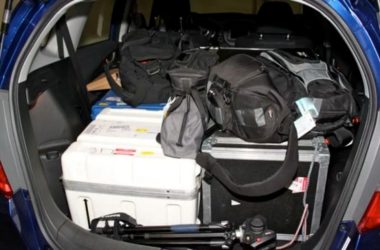Why It’s Important to Test Drive a Hatchback
Test driving a new or used hatchback before buying is one of the most important steps in finding the right car. Taking a hatchback for a spin allows you to experience how it handles, rides, accelerates, brakes, and performs for you behind the wheel. This gives you a feel that simply can’t be replicated by specifications on paper or even analysis from professional reviewers.
According to recent statistics, hatchback sales have declined globally, with sedans, wagons and hatchbacks losing market share to SUVs and crossovers (source). However, hatchbacks remain popular for their practicality, functionality, fuel efficiency and driving dynamics. Taking one for a test drive allows you to determine if a hatchback is the right type of vehicle for your needs and preferences.
This article provides a step-by-step guide to test driving a hatchback to help equip you with the knowledge to thoroughly evaluate your options. Following these tips will enable you to determine if a particular make and model meets your must-haves for performance, comfort, cargo space, and more.
Schedule a Test Drive
Contacting the dealership to set up an appointment will ensure the salesperson is available and has the car ready when you arrive. Most dealerships now require scheduling test drives in advance instead of doing walk-in test drives. Setting up an appointment shows the dealer you’re a serious buyer and makes the process go more smoothly.
Call or email the dealership, providing details on the specific car you want to test drive and when you’d like to come in. Many dealers list a phone number or online scheduling form specifically for test drives. According to one Redditor, walking in without an appointment may result in waiting longer or not being able to test drive at all. Aim to schedule test drives on less busy days and times if possible.
When you arrange the appointment, ask how long you can test drive the car for. Some dealerships allow extended test drives while others limit to 30 minutes or less. If you want more time, explain why – for example testing comfort on a longer commute. The salesperson may allow extra time if they know you’re seriously considering buying.
Inspect the Exterior
Before getting into the hatchback for a test drive, it’s important to thoroughly inspect the exterior. Walk around the entire vehicle and check for any dents, scratches, or other body damage. Pay extra attention when examining the paint job. Look for any chips, fading, orange peel, or mismatched panels that may indicate shoddy paint work or repairs. According to Junk Car Medics, paint problems are one of the most common exterior issues with vehicles [1].
Open and close all the doors, trunk, and hood to check for any sticking or loose feeling. All should open and close smoothly without extra force needed. Listen for any squeaking or strange noises when operating the doors and trunk. This could signify a problem with the hinges or latches that may need repair. When inspecting the hatchback exterior, check that all lights, signals, mirrors, windshield wipers are in good working condition before the test drive.
Adjust the Seats and Mirrors
Properly adjusting the seats and mirrors is crucial for comfort and safety when test driving a hatchback. Start by setting the seat position so you can comfortably reach the pedals and steering wheel. Sit upright with your back against the seat and adjust the seat forward or backward until your knees are slightly bent when pressing the pedals. The steering wheel should be no more than 10 inches from your chest with your arms slightly bent (Source).
Next, adjust the height of the head restraint so the top aligns with the top of your head, not your neck. This provides protection in the event of a rear collision. Tilt the head restraint forward slightly to fit the contours of the back of your head (Source).
For the side mirrors, lean your head toward each window and adjust the mirrors so you just barely see the side of the car. The viewing angle should maximize your rear peripheral vision. Do not adjust the mirrors to eliminate blind spots – this takes your eyes off the road. Just check blind spots by glancing over your shoulder before changing lanes (Source).
Review the Interior Features
When test driving a hatchback, it’s important to assess the interior features and technology. According to HotCars, some of the coolest hatchback interiors include tech features like digital dashboards, head-up displays, and large infotainment screens (https://www.hotcars.com/new-hatchbacks-have-coolest-interiors/).
Be sure to check out the infotainment system and connect your phone to test functionality. Review speaker quality and screen brightness/responsiveness. Newer hatchbacks may have integrated apps, voice controls, navigation, and more.
Adjust the driver’s seat to find a comfortable position. Many hatchbacks offer power seats with lumbar support and memory settings. See how much you can adjust the steering wheel and if the controls are conveniently located.
Test the climate control system by changing the temperature, fan speed, and vent positioning. Hatchbacks tend to have good ventilation thanks to the open cargo area.
Finally, inspect the interior storage spaces. Hatchbacks offer versatile cargo capacity, but you’ll want to see how door pockets, glove compartments, center consoles, and other areas accommodate your everyday items.
Start the Engine
When starting the engine in a hatchback for the first time, follow these steps:
First, make sure the parking brake is engaged. Next, press the brake pedal down firmly with your right foot. This is required to be able to start most modern vehicles with push-button start. Then, push the engine start button. This is typically located on the center console or dashboard. The engine should turn over and start up. Listen carefully for any unusual sounds coming from the engine bay that could indicate a problem. Some rattling noise is normal on initial start-up as oil circulates, but loud knocking or grinding sounds are not good. Let the engine run for about 30 seconds before driving off, especially when cold, to allow oil to reach all components.
According to WikiHow, “Twist the ignition key to start the car. You will have to rotate the key past two stops and push against a spring-loaded third and final stop to start the car.” Starting the engine is a crucial part of the test drive process.
Per How a Car Works, “The first contact supplies a low current to the motor so that it turns slowly – just far enough to let the pinion teeth engage. Then the second contacts close, allowing higher current to flow to crank the starter motor faster.”
Test Drive Basics
Once you are sitting behind the wheel and ready to begin the test drive, make sure to buckle up for safety and adjust the mirrors again while stationary, since they may have moved when you entered the vehicle. Double check that your seat is in a comfortable position where you can reach all pedals and controls. Release the parking brake before putting the car into gear so it is ready to drive. For manual transmission vehicles, press the clutch pedal all the way down and move the gear shift into first gear. For automatic vehicles, simply take your foot off the brake pedal and put the car into drive mode. Give yourself a minute to get familiar with the location of controls while the vehicle is not moving. Go slowly at first, getting a feel for the brakes and accelerating. Stay focused and avoid distractions while getting comfortable behind the wheel.
According to experts, the key steps for driving basics are buckling up, adjusting seat and mirrors for comfort and visibility, releasing the parking brake, putting the car in gear, and going slowly at first to acclimate to the vehicle while stationary before accelerating onto roadways. [1] Always keep both hands on the steering wheel and your full attention on driving.
[1] “Driving Basics.” Teen Driver Source, www.teendriversource.org/learning-to-drive/practice-driving-lessons/driving-basics.Drive on Different Roads
When test driving a hatchback, it’s important to drive on a variety of different roads to get a feel for how the car handles and accelerates in different environments.
What are the different test done for measuring Handling … – YouTube
Try taking the hatchback on suburban streets, highways, and roads with hills. Suburban streets will demonstrate the car’s maneuverability and ability to make tight turns. Highways will allow you to test acceleration capabilities and high-speed handling. Hills are useful for assessing the car’s power when going uphill and engine braking downhill.
Pay attention to how smoothly the hatchback accelerates, whether the transmission shifts gears appropriately, and how well the car maintains speed going uphill. Test braking when going downhill. Focus on any body roll or loss of control when turning at higher speeds on highways. The hatchback should feel balanced and stable across different road conditions.
Assess Comfort and Visibility
When test driving a hatchback, be sure to evaluate the comfort and visibility the vehicle provides. Focus on the following areas:
Seat Comfort: Hatchbacks tend to have firmer, more supportive seats than sedans or SUVs. Make sure the seats are comfortable for you during a lengthy drive. Try adjusting the seat height, tilt, and lumbar support. Are the seat cushions too firm or too soft? Is there enough side bolstering to keep you in place while cornering?
Cabin Noise: Hatchbacks can be slightly noisier inside than other vehicles, due to their boxy shape. When test driving at different speeds, listen for wind noise or road noise entering the cabin. Is it loud enough to make normal conversations difficult?
Blind Spots: The view out of a hatchback is often more obstructed than a sedan. Check your blind spots by looking over your shoulder before changing lanes. How large are the rear pillars? Do they block much of your peripheral vision? This will impact your reliance on mirrors.
Parking and Maneuverability: Hatchbacks are generally easy to park, thanks to their short length. But check the turning radius by making some tight turns. Can you easily maneuver into tight spaces? Make sure the backup camera, proximity sensors, and steering assist features work well.
Reporting any comfort or visibility issues you notice to the dealer. These concerns may influence which hatchback model best fits your needs.
Dealer Follow-Up
After you complete your test drive, head back to the dealership to discuss the experience with the salesperson. This is a good opportunity to ask any additional questions that may have come up during your drive. According to sources, some good questions to ask the dealer after a test drive include:
“What are the terms of the warranty?” (ThompsonSales)
“What maintenance costs or recurring fees are associated with this model?” (ConsumerReports)
“Were there any issues you noticed with the vehicle during my test drive?” (Edmunds)
You’ll also want to discuss your overall impressions of the car with the salesperson. Provide feedback on the ride quality, handling, visibility, seat comfort, and performance. Mention any concerns you may have about blind spots, road noise, or lack of cargo space. The salesperson may be able to suggest accessories or adjustments that could improve some of these issues.
Don’t feel pressured into making a buying decision right away. Let the salesperson know you’d like to carefully consider all the hatchback models you test drove. Take any brochures and pricing quotes with you for further comparison.





